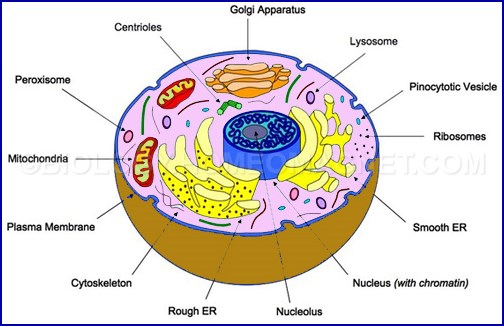Biology related pages:
- Biology
- Branches of Biology
- Biological classification
- Origin of Life
- Biochemical Origin of Life
- Smallest unit of Life
- Types of Cells
- Eukaryotic Cells
- Cell Cytoplasm
- Golgi body
- Mitochondria
- Function of Endoplasmic Reticulum
- Ribosome Structure
- Lysosomes
- Microtubules
- Cell Wall
- Cell Nucleus
- Cell Nucleus Structure
- Chromosomes
- Chromosome Structure
- DNA Replication
- X and Y Chromosomes
- Cell Membrane
- Cell Junctions
- Cell Division
- Amitosis
- Mitosis
- Meiosis
- Meiosis Stages
- Respiration
- Cellular Respiration
- Process of Respiration
- Digestion
- Genetics
- Gene
- Mendel’s Experiments
- Natural Selection
- The Law of Segregation
- Genetic Variation
- Crossing Over
- Gene Mapping
- Transgenic Plants
- Mutation
- Gene Mutation
- Chromosomal Mutations
- Ecological Community
- Ecosystem
- Structure of ecosystem
- Sweat Glands
- Causes of overpopulation
- Effects of overpopulation
- Population Control
- Air Pollution
Do you know what are Eukaryotic cells? All Eukaryotic cells are bordered by a cell covering. Protoplasm is remains enclosed in it. This covering is a living membrane in case of all plants and animals cells and it is called the cell membrane or the Plasma membrane. An additional outer covering possess by the plant cells, which is made by a non-living matters and is called cell wall.
The protoplasm of eukaryotic cells is clearly divisible in to two parts, (i) cytoplasm and (ii) nucleus. The fluid parts of cytoplasm which is composed of water dissolved various organic and inorganic matters is called matrix. Some living and nonliving particles remain scattered within the matrix and these are called cytoplasmic organelles and cytoplasmic inclusions. Four distinct parts contains by the well organised nucleus, those are nuclear membrane, nuclear reticulum, nucleolus and nucleoplasm.
It should be keep in mind that majority component of eukaryotic cells we are going to discuss are presents both plant and animal cells, whereas some other occur in plants or animal cells only. As example, the cell wall and plastids are available in plants cells only, otherwise centrosome and lysosome are seen animal cells generally. But it should be noted that even those components that are found in all cells are not equally well developed and organised in different types of cells. A particular component having a specialised function is found to be developed in cells concerned with that type of function in general.
Parts of Eukaryotic cells: -
i) Cell Membrane (Plasma Membrane): - The thin, elastic and semi-permeable living membrane that surrounds the protoplasm of a cell called cell membrane.
ii) Cell Junctions: - Cell junctions are specialised regions of firm intercellular connections between the plasma membranes of adjacent cells.
iii) Cell Adhesion Molecules (CAMS): - Besides the cell junctions, some protein molecules are there in between the tissue cell for building cells together. These molecules of protein are called cell adhesion molecules or CAMs.
iv) Cell Wall: - The thick and rigid, non-living covering presents just outside the plasma membrane of plant cells is called the cell wall.
v) Cytoplasm: - the protoplasmic contents of a cell, excepting the nucleus is called cytoplasm. The semi liquid and granular part of the cell that remains extended from plasma membrane to nuclear membrane is known as cytoplasm.
vi) Cytoplasmic Matrix: - The fluid ground substance of cytoplasm, in which the organelles and inclusions remain suspended, is called cytoplasmic matrix.
vii) Cytoplasmic organelles: - The living structures of cytoplasm that remains dispersed in the matrix of eukaryotic cells are called cytoplasmic organelles.
viii) Mitochondria: - The rod like, filamentous, spherical or oval, double membrane bound cytoplasmic organelles of eukaryotic cells, which are concerned with respiration of cells are called mitochondria.
ix) Endoplasmic Reticulum: - The membrane bound irregular, network like vacuole system present in the cytoplasm of eukaryotic cells is called endoplasmic reticulum.
x) Ribosome: - Ribosome are small, granular, non-membranous structures that are made up of RNA and protein and concerned with protein synthesis.
xi) Golgi Body: - Golgi body is a smooth surfaced, membrane enclosed organelle of eukaryotic cells which is concerned with secretion.
xii) Lysosomes: - Lysosomes are membrane bound vesicular cytoplasmic organelles containing hydrolytic enzymes.
xiii) Cytoskeleton: - The protein made, rigid, tubular and filamentous structures that form the framework of cytoplasm, give a shape to the eukaryotic cell and help in cellular motion are collectively called cytoskeleton or the skeleton of the cell.
xiv) Centrosome: - Centrosome is a more or less spherical mass of dense cytoplasm situated close to the nucleus and contains a pair of cylindrical bodies that are concerned with spindle formation during cell division.
xv) Cilia and Flagella: - Cilia and Flagella are hair-like micro-tubular organelles projecting from the cell surface into the extracellular medium and are concerned with cell motility.
xvi) Microfilaments: - Microfilaments are protein made fine filamentous cytoskeleton structures that are not tubular but solid.
xvii) Plastids: - Plastids are double membrane bound, pigmented or non-pigmented cytoplasmic organelles found in plant cells and concerned with manufacture or storage of food or colouration.
xviii) Vacuoles: - Vacuoles are membrane bound apparently empty spaces or cavities within the cytoplasm of eukaryotic cells.
xix) Cytoplasmic Inclusion: - The non-living matters scattered in the cytoplasm are called cytoplasmic inclusions or Ergastic Substances.
xx) Nucleus: - The nucleus is the most important membrane enclosed part of the eukaryotic cells which contains chromosomes and controls all the activities of the cell.
Click here for
MCQ on Eukaryotic Cells



